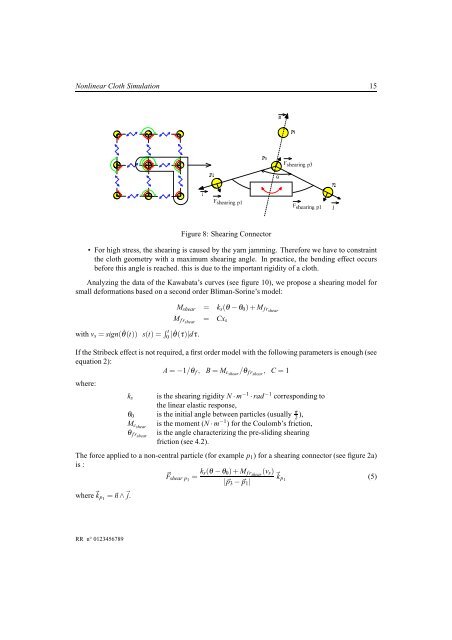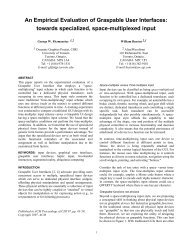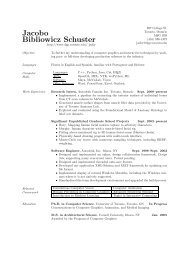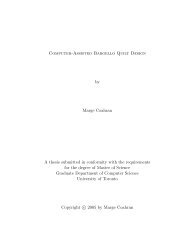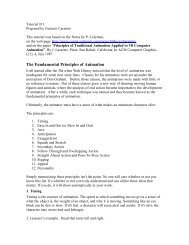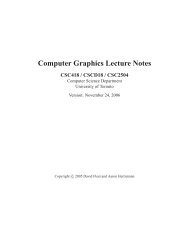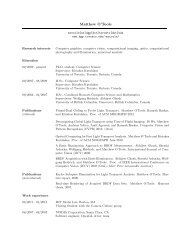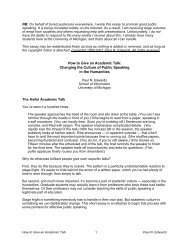Nonlinear Cloth Simulation - dgp
Nonlinear Cloth Simulation - dgp
Nonlinear Cloth Simulation - dgp
Create successful ePaper yourself
Turn your PDF publications into a flip-book with our unique Google optimized e-Paper software.
<strong>Nonlinear</strong> <strong>Cloth</strong> <strong>Simulation</strong> 15<br />
¢<br />
¤ ¥<br />
θ ¦ § £ ¡<br />
F shearing p1<br />
Figure 8: Shearing Connector<br />
F shearing p3<br />
F shearing p1<br />
• For high stress, the shearing is caused by the yarn jamming. Therefore we have to constraint<br />
the cloth geometry with a maximum shearing angle. In practice, the bending effect occurs<br />
before this angle is reached. this is due to the important rigidity of a cloth.<br />
Analyzing the data of the Kawabata’s curves (see figure 10), we propose a shearing model for<br />
small deformations based on a second order Bliman-Sorine’s model:<br />
Mshear = ks(θ − θ0)+Mf r shear<br />
Mf r shear<br />
with vs = sign( ˙θ(t)) s(t) = � t<br />
0 | ˙θ(τ)|dτ.<br />
= Cxs<br />
If the Stribeck effect is not required, a first order model with the following parameters is enough (see<br />
equation 2):<br />
A = −1/θ f, B = Mc shear /θ f r shear , C = 1<br />
where:<br />
ks<br />
θ0<br />
Mcshear θ f rshear is the shearing rigidity N · m−1 · rad−1 corresponding to<br />
the linear elastic response,<br />
is the initial angle between particles (usually π 2 ),<br />
is the moment (N · m−1 ) for the Coulomb’s friction,<br />
is the angle characterizing the pre-sliding shearing<br />
friction (see 4.2).<br />
The force applied to a non-central particle (for example p1) for a shearing connector (see figure 2a)<br />
is :<br />
�Fshear p1 = ks(θ − θ0)+Mf r (vs)<br />
shear �kp1<br />
|�p3 − �p1|<br />
(5)<br />
where�kp1 =�n ∧�j.<br />
RR n° 0123456789


